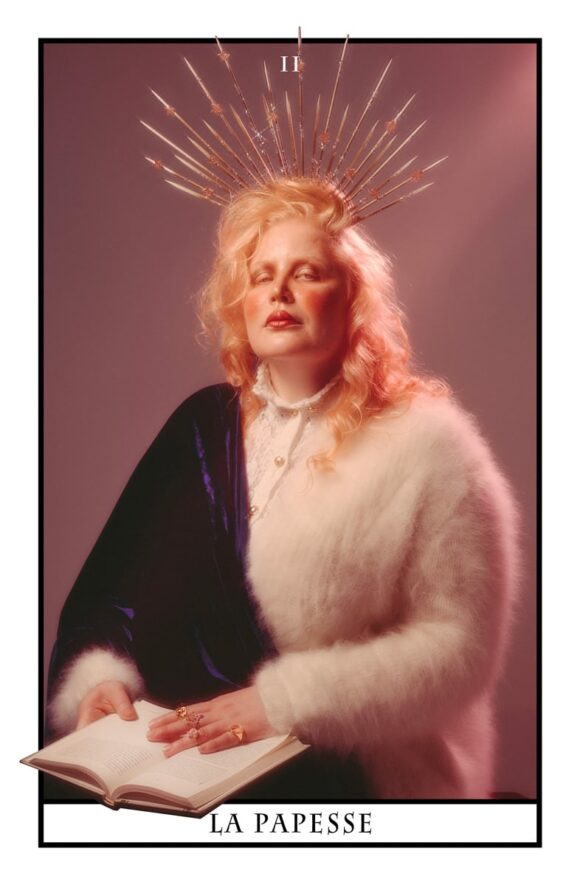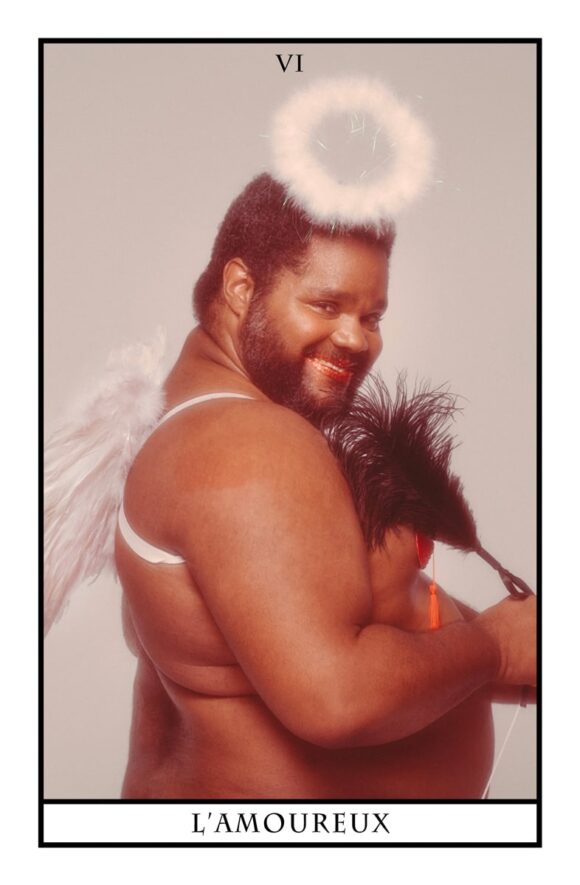Bizarre or trending subjects, catch a break with our curiosity of the week. With her Tarot XXI, the photographer Roxane Moreau imagines a card game in line with the commitments of our contemporary society.
“Photography allows me to bear witness to the times I live in. Thanks to it, I can contribute to sharing my vision of what surrounds me. I’m able to encourage those who have given up on themselves to take control of their lives and counteract unexpected life scenarios”,
says Roxane Moreau. Originally destined to be a pastry chef, the Reunionese-born photographer finally turned to the medium at the age of 21. Keen to “get her hands dirty”, she started out as a self-taught photographer and did a number of internships – in art galleries and studios – before being hired as a set assistant. A career that shaped her and affirmed her vision. Today, the artist favours a thought-out approach, preferring “to take the time to create with others – the make-up artists as well as the people who pose for [her]”, rather than freeze everyday moments.
In colour, the artist shares her own vision of the world, her universe – with a touching generosity. “I don’t do much black and white because it tends to create distance from the image we are looking at. I try to do just the opposite, to bring people together,” she confides. This need to include in her work, the nuances of the human being, while celebrating its diversity, is apparent in Tarot XXI. A contemporary reinterpretation of the famous set of cards, revealing a mosaic of characters as atypical as they are majestic.


Constructing an inclusive tarot
Composed of 78 cards, including 56 minor and 22 major arcana, the tarot was born in Northern Italy in 1441, created for the Viscontis, a noble family who loved card games. “It was Marseille, our capital of the sun, which appropriated it a few centuries later,” says Roxane Moreau. Hand-painted on wooden boards covered with gold and precious pigments, the cards were, at the time, reserved for the elite and were a means of parading and displaying one’s wealth to others. “If you look at the game, you will discover that there are no bakers or peasants, but only noble figures and beliefs of the time: the Pope, the Emperor, the Empress, Justice, etc.”, the photographer continues.
By bringing tarot up to date, she hijacks this aristocratic heritage with humour. On the cards designed by Roxane Moreau, bodies, gender and sexual orientations are proudly displayed, representing the spectrum of our differences with panache. An amusing nod to the origins of the game. “I wanted to represent the figures of my generation as much as possible,” she explains. Regal, her models become the emblems of an era driven by its commitments. Several centuries later, have things really changed? Are minorities integrated into society? And what about the distribution of wealth? By constructing an inclusive tarot, the photographer highlights the inconsistencies of the modern world, and offers the most overlooked communities a platform to express and reveal themselves, and shine, without fear of judgment. “In the etymology of the word aesthetics, we find the idea of the sensations provided by what we see, and my desire was that when you hold the tarot in your hand – because it has really been made! – you can imagine yourself becoming a kind of hero of your own game, and therefore of your own life”, concludes the artist.








© Roxane Moreau








